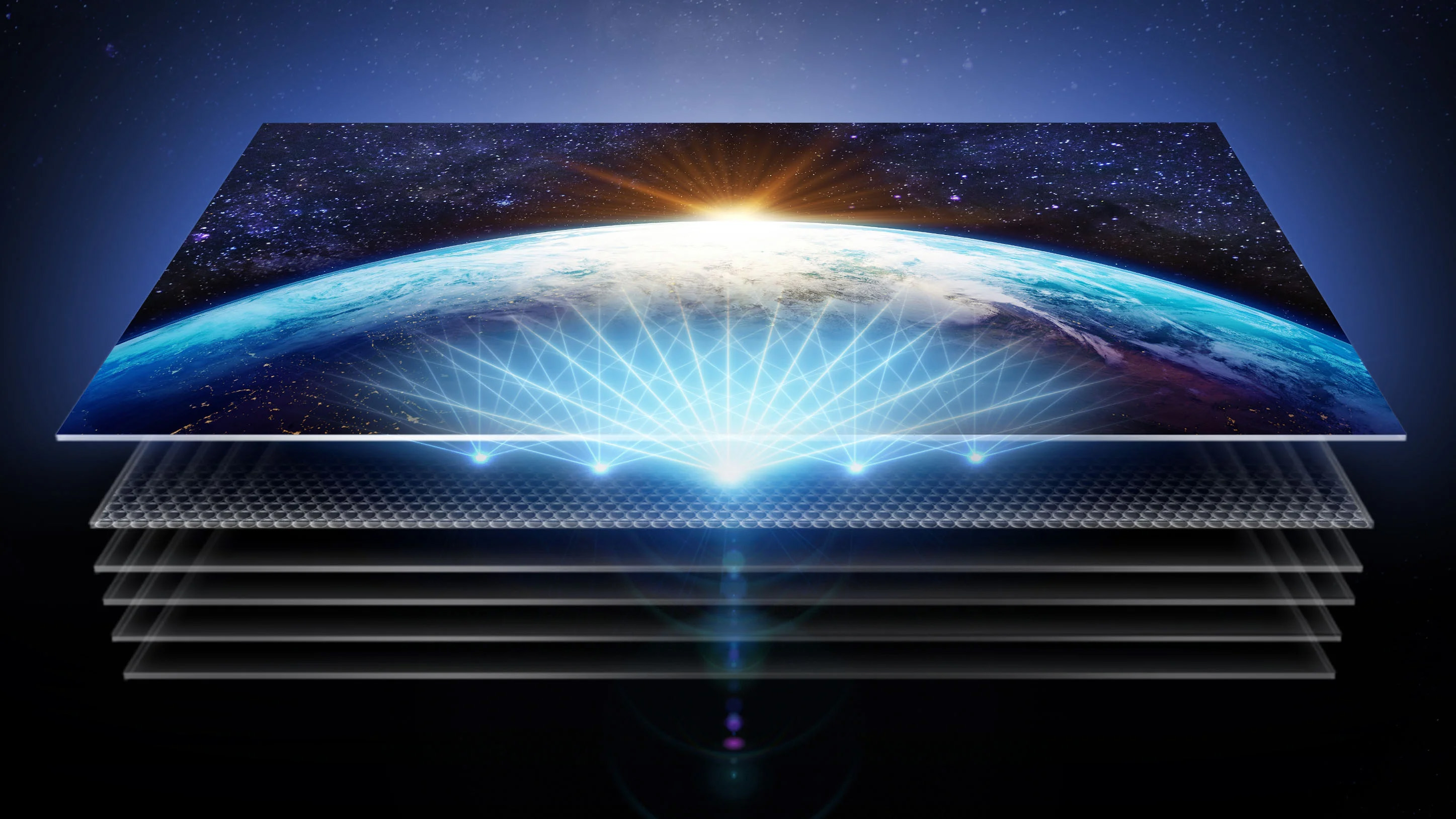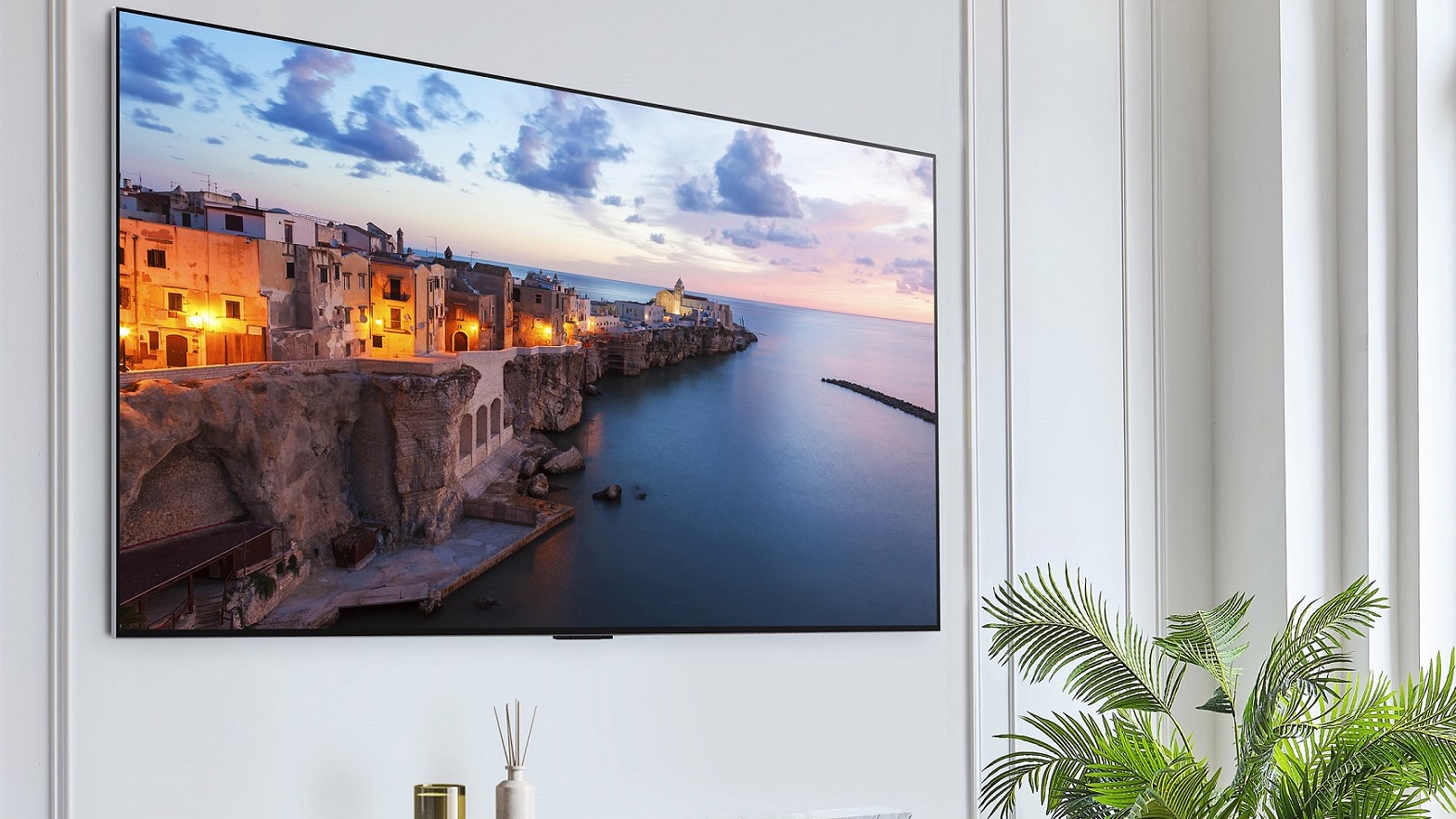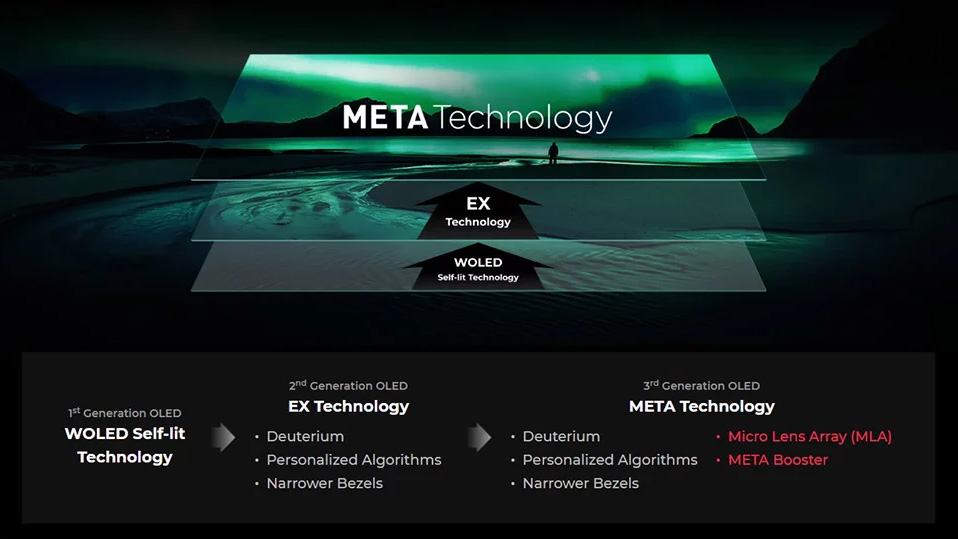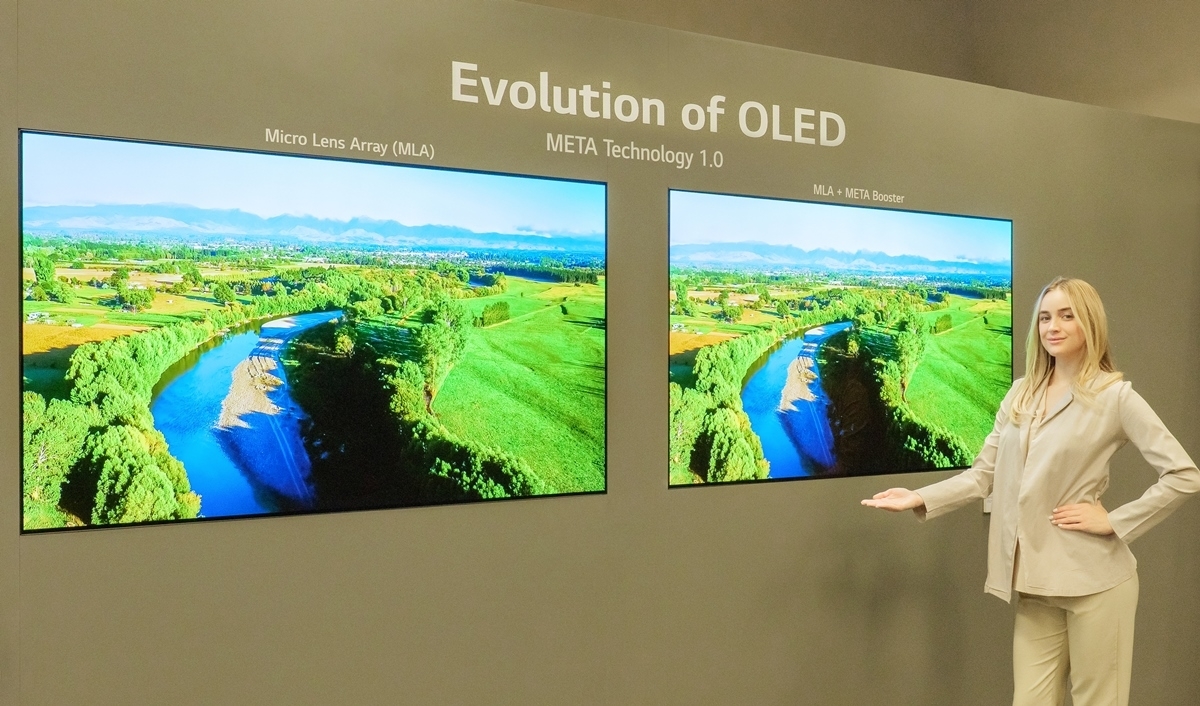How OLED TVs' biggest issue can be fixed with Micro Lens Array and META tech
We explain why these new brightness-boosting technologies could be a game-changer for OLED TVs

At CES 2023, LG and Panasonic revealed new OLED TVs that are significantly brighter than their previous screens, and Philips followed up soon after with a model of its own. LG claims these TVs – including the upcoming LG G3 OLED – are 150% brighter than certain models from last year’s range. How are such pupil-scorching results achieved? With a new technology called Micro Lens Array.
But what is Micro Lens Array (MLA), and why could it be an OLED game-changer? While Samsung’s impressive QD-OLEDs – including the brilliant Samsung S95B – boost brightness through the use of quantum dots, MLA is a different beast. It also pairs with another new OLED tech from LG Display (which makes the OLED screens in LG, Panasonic and Philips sets): “META” OLED.
If all these acronyms make your head spin, fear not; we’re here to explain exactly what both Micro Lens Array and META are. Read on for a detailed explainer of both technologies, and find out why they could help the best OLED TVs screens match (or even surpass) QLED TVs.

What is Micro Lens Array?
Micro Lens Array (MLA) is a technology where billions of minuscule convex lenses are placed above a traditional OLED panel’s pixels. The numbers only get more staggering the deeper you delve into the tech. LG claims it can squeeze 5,000 or more of these lenses onto a single OLED pixel, equating to over 42 billion micro lenses on a 77-inch TV.
Even more impressively, LG states that its new OLED TVs will be significantly more efficient compared to past models. Because MLA’s lenses redirect the light from OLED pixels, it reduces wastage of light not angled directly towards your eyes. In simpler terms, an OLED TV with Micro Lens Array tech could be as much as 22% more energy efficient compared to a standard OLED panel.
These energy gains should also help increase the lifespan of OLED TVs with MLA. The Panasonic MZ2000 was one of the best TVs at CES 2023, and it’s among the first panels to officially have Micro Lens Array. With Panasonic’s history of producing the brightest OLED TVs on the market – in part thanks to the firm’s robust heatsink tech so it can drive the panel harder – the MZ2000 could be the brightest, longest-lasting OLED ever made.

How does META OLED fit in?
Not to be confused with the company that was once Facebook, META combines both hardware and software solutions to help boost the brightness of LG’s latest OLEDs. The previously discussed Micro Lens Array is the hardware part, while META is the software – it’s a brightness-boosting algorithm that's directly part of the panel, not part of the overall image processing in the TV.
Get daily insight, inspiration and deals in your inbox
Sign up for breaking news, reviews, opinion, top tech deals, and more.
The exactly details of the META algorithm aren't public, but we understand a big part is how it handles power, so the energy can be really focused on the parts that need the most brightness.
There is a small wrinkle to us say that LG TVs support all of this, by the way. Thanks to internal politics at LG, the company won’t confirm that its upcoming LG G3 and LG M3 actually support Micro Lens Array technology, instead saying it includes new hardware called 'Light Control Architecture'. This is down to the divide between LG Electronics (which makes and sells the actual TVs) and LG Display (which manufactures the OLED panels), with the former refusing to acknowledge the name coined by LG Display.
After speaking to people familiar with the matter, it's TechRadar's understanding the tech is the same in LG TVs as in the Panasonic MZ2000 and Philips OLED+908.
How much brighter will Micro Lens Array/META make new OLED TVs?
LG claims its new META panels are capable of hitting a hugely impressive 2,100 nits of peak brightness. This would be in a 3% HDR window, and we certainly wouldn't expect that from every single image preset mode – the actual measured figures we get in reviews are likely to be below this.
For context, the LG G2 and Panasonic LZ2000 were able to hit a little past 1,100 nits of peak brightness in the real world. Panasonic is suggesting that we could see around 1,500 nits of brightness from its TV in the real world – and a 50% improvement would basically be the biggest leap in OLED brightness we've seen so far.
We've seen a direct comparison of the Philips OLED+908 TV that uses MLA, with the previous Philips OLED+907 that features last-gen OLED.EX tech – the difference in brightness is clear, with whites popping much more, and colors looking both more vibrant and more realistic.

What OLED TVs will get Micro Lens Array and META?
One thing to know about MLA tech is that it's not available at every screen size. It's only coming in 4K OLED panels of 55 inches, 65 inches and 77 inches. So while some of the TVs listed below have other screen sizes, these are the only sizes that will feature the brighter technology.
LG G3 OLED TVs will house the brightness-bolstering tech in all three sizes, while the LG M3 (coming much later in 2023) will include the tech at 77 inches. However, the LG Z3 8K OLED TV also includes the tech, and is available at 77-inch or 88-inch sizes. Expect the 55-inch LG G3 to cost $2,199 / £2,399 (around AU$3,200), the 65 to set you back $3,199 / £3,299 (around AU$4,700), and the 77-inch to sell for $4,199 / £4,499 (around AU$6,100).
The Panasonic MZ2000 will come in 55 and 65-inch sizes, while the Philips OLED+908 will come in 55-inch, 65-inch and 77-inch sizes.
Does MLA bring any other viewing benefits?
LG Display has stated its new META panels offer improved viewing angles over previous OLED screens. No mean feat when you consider traditional OLED TVs already sport excellent viewing angles. The division claims its new META-boosted screens have a viewing angle of 160 degrees, a 30% bump over the firm’s LG C2 and LG G2 range of OLEDs.
There is also another big benefit to these panels, but it's due to a third technology they include. There's a new polarizer, which is what helps to reduce reflections in the screen, and it's a massive improvement over anything we've seen before. It roughly halves the brightness of reflections in our experience, meaning that the brightness of the screens is able to punch through even more clearly in bright rooms. This is in all of the sets mentioned above.
Dave is a freelancer who's been writing about tech and video games since 2006, with bylines across GamesRadar+, Total Film, PC Gamer, and Edge. He's been obsessed with all manner of AV equipment ever since his parents first bought him a hideously garish 13-inch CRT TV (complete with built-in VCR, no less) back in 1998. Over the years he’s owned more plasma and OLED TVs than he can count. On an average day, he spends 30% of his waking existence having mild panic attacks about vertical banding and dead pixels.
